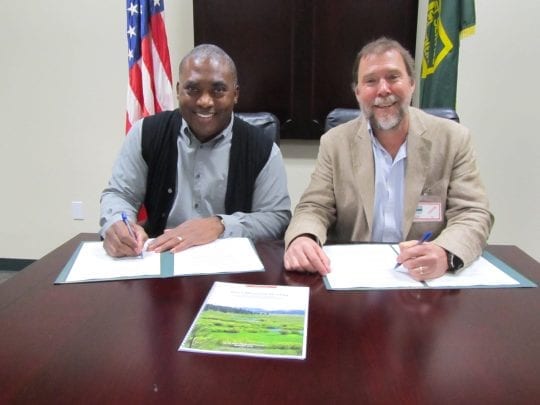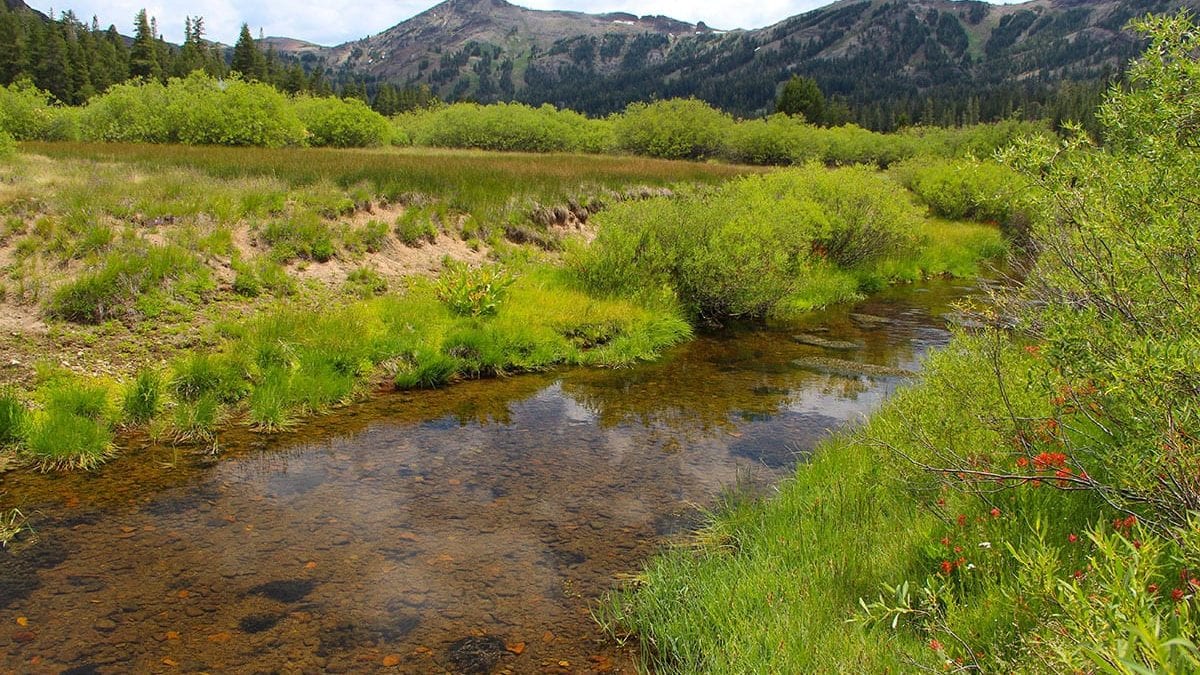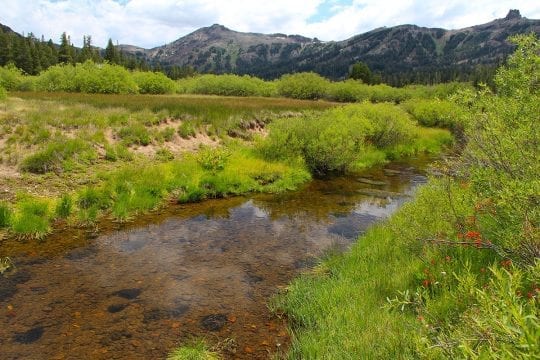Sierra Meadows Partnership adopts “all-hands, all-lands” approach to restore and protect state’s Sierra Nevada meadows
The Sierra Meadows Partnership, spearheaded by California Trout and comprising a broad coalition of government agencies, scientists, non-profit conservation organizations and other stakeholders, announced the release of the Sierra Meadows Strategy. The strategy outlines an action plan to restore and protect 30,000 acres of mountain meadowlands in the greater Sierra Nevada of California within 15 years.
The Pacific Southwest Region of the U.S. Forest Service and CalTrout also signed a Memorandum of Understanding (MOU) today formalizing a collaborative approach to advance meadow restoration. Other stakeholders interested in working on meadows restoration, including members of the partnership, will be invited to join the MOU moving forward.
“The Sierra Meadows Partnership is taking an ‘all-hands, all-lands’ approach to this effort,” said Mark Drew, Sierra Headwaters Program Director for California Trout. “This strategy is a framework for widespread restoration of Sierra meadows to benefit fish, wildlife and plants as well as millions of Californians who depend on Sierra Nevada water for their health and livelihoods.”

Barnie Gyant (Forest Service Deputy Regional Forester) and Mark Drew (Sierra Headwaters Program Director for California Trout) signing MOU agreement.
More than 20 partner groups have worked together since February 2014 to produce the Sierra Meadows Strategy. The strategy provides the guidance necessary to achieve an ambitious and effective course of action to increase rates of meadow conservation. By reaching consensus on a path forward, a diverse group of agencies, scientists, and other stakeholders can more effectively leverage resources and strategic changes required to restore and protect meadows throughout the greater Sierra Nevada Region.
This region is the source of more than 60 percent of the state’s developed water supply. It also encompasses a rich variety of natural areas, supporting 50 percent of California’s plant species and 60 percent of the state’s animal species. Sierra meadows cover less than 2 percent of the overall Sierra-Cascade landscape, but they are biological hotspots that sustain the headwaters of several major California water sources. Like the mountain snowpack that Californians depend on for year-round water, healthy meadows store water and release it gradually. They also filter out pollutants in the process. As the climate warms and scientists project more rain and less snowfall in these mountain ranges, Sierra meadows will become an increasingly important resource for water storage. Of the roughly 190,000 acres of meadows throughout the greater Sierra Nevada, an estimated 40-60 percent have been degraded due primarily to human activity.
“The Sierra Nevada Conservancy (SNC) recognizes the importance of healthy meadows, but unfortunately a significant percentage of Sierra meadows are in a degraded state. The Sierra Meadows Strategy is a timely and important effort to increase the pace and scale of Sierra meadow restoration through a collaborative approach,” said Jim Branham, Executive Officer of the Sierra Nevada Conservancy. “The strategy also supports the SNC’s Watershed Improvement Program, and is an important component in holistically restoring our watersheds.”
The Strategy lays out plans for an ambitious course of action. To achieve its overarching goal will require restoring 30,000 of the estimated 90,000 acres of degraded meadows in the strategy area over the next 15 years. This work will require a multi-pronged approach that includes improving the science and implementation of meadow restoration, helping to improve the efficiency of planning and permitting and building funding, resources and partnership capacity.
“The Sierra Meadows Strategy will guide the protection, restoration and conservation of these critical lands,” said Randy Moore, Regional Forester for the Pacific Southwest Region of the U.S. Forest Service. “The strategy describes our target conditions for restored meadows, and lays out a detailed, actionable road map for getting there.”
Click here for more information about the Sierra Meadows Strategy, or to download a copy of the report.
About the Sierra Meadows Partnership
The vision of the Sierra Meadows Partnership is a greater Sierra Nevada region with healthy and resilient meadows that provide sustained benefits to fish and wildlife and the people of California. The partnership is a collaboration and has had participation by representatives from non-profit and for-profit natural resource organizations (Plumas Corporation, California Trout, Trout Unlimited, Stillwater Sciences, Sierra Foothill Conservancy, Truckee River Watershed Council, American Rivers, The Nature Conservancy, Point Blue, Institute for Bird Populations, Occidental Arts and Ecology Center), public natural resource agencies (U.S. Forest Service including the Pacific Southwest Research Station, National Park Service, United States Geological Survey), universities (University of California at Merced, Davis and Berkeley, University of Nevada Reno, California State University at Sacramento), and funding institutions (National Fish and Wildlife Foundation, California Department of Fish and Wildlife, State Water Resources Control Board).







2 Comments
I have doubts about “meadow restoration” with the Forest Service. What I have seen is widespread cutting of all trees in an area near streams and supposedly to make or restore meadows that were there in the past. Meadows dont produce timber in much quantity. Why would the FS be interested if the program isn’t growing more trees?
Hi John, thanks for your question. The Forest Service’s overarching mission is to sustainably manage and protect forests and grasslands, so with that, comes meadow restoration. Their goal is not to grow more trees, though they do have many projects that involve trees. Meadow restoration is important because healthy mountain meadows can increase groundwater storage capacity, attenuate peak flows, prolong summer base flows, and reduce in-stream water temperatures. However, thousands of acres of meadows in the Sierra have been impacted by historic and ongoing land uses, which have altered their natural hydrology and impaired their ability to provide these critical benefits. All of this falls under the Forest Service’s interests which is why they support projects like ours.